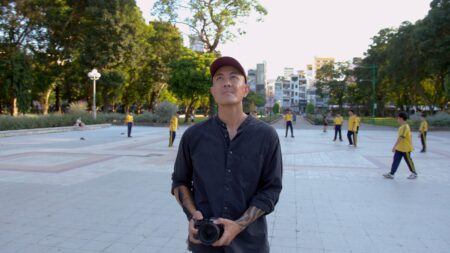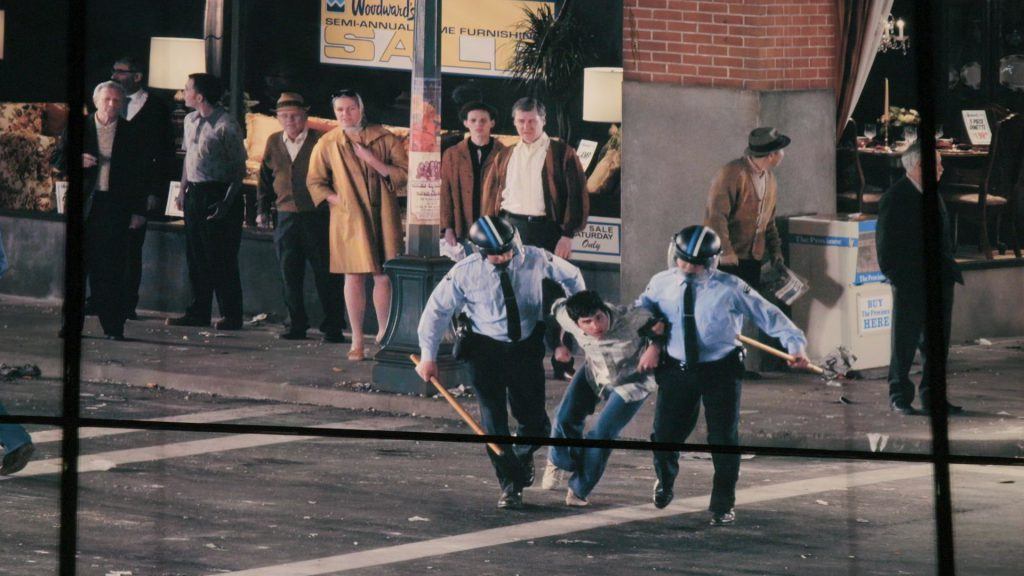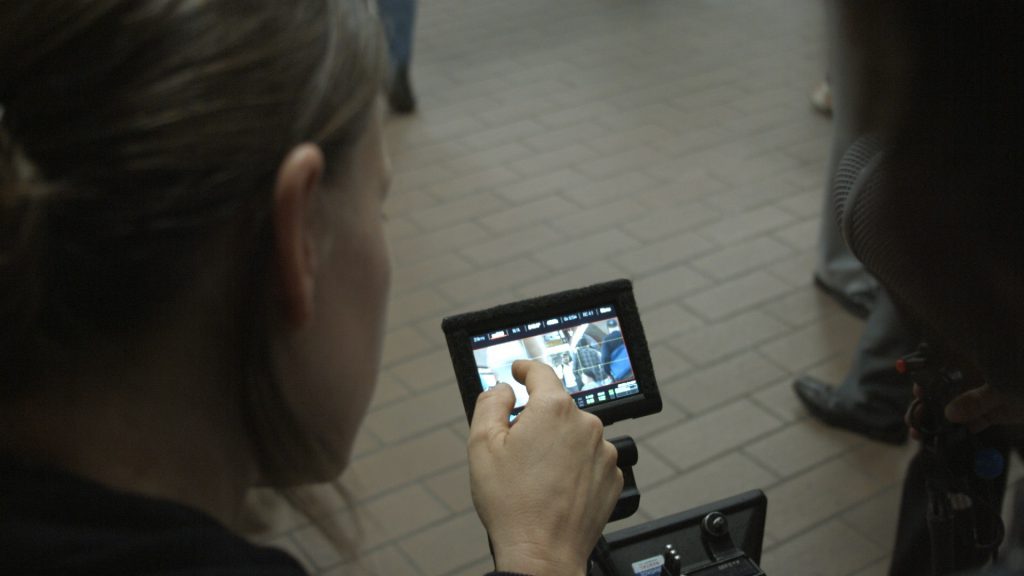Stan Douglas was born in Vancouver in 1960. He reenacts historical moments of tension that connect local histories to broader social movements of struggle and utopian aspiration. In the artist’s intricate works, time and place fold back onto themselves to create a parallax of both vision and narrative: multiple moments in history and geography are experienced by the viewer simultaneously and reconciled into a new story.
The artist’s hometown of Vancouver often serves as inspiration for research into transitional periods—the raucous early twentieth century, the noirish aftermath of World War II, the revolutionary and libertine 1970s—while Douglas’s investigations take him around the globe to explore moments of crisis and change in Cuba, Detroit, Berlin, Paris, New York, Lisbon, and Angola, among others. Working at the forefront of new media technologies, Douglas’s works have taken the form of mobile apps, virtual reality simulations, live cinema, theatrical productions, and multi-channel video installations where the narrative alters continuously through recombinant editing software. Douglas also produces photographs with the period detail and staging of a feature film director, freezing both reenactments and imagined scenes from the past in sumptuous color and rich black and white.
In the following preview from the Vancouver episode of Season 8 of Art in the Twenty-First Century, Douglas describes the making of his 2008 photograph Abbott & Cordova, 7 August 1971. Depicting a careful restaging of the 1971 Gastown riots, the photograph shows Vancouver police attacking a peaceful protest organized to demonstrate against weeks of arrests by undercover agents.
“Almost always my works are allegories of the present, as well,” says the artist. “That event made this neighborhood what it is today.”



